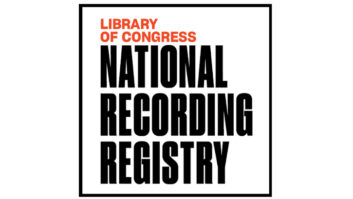A version of this story appeared in Radio World circa 2000. It is republished here with the approach of another holiday season.
Recently I rendezvoused with an engineer at his station that was off the air. Our mutual desire was to get the transmitter back on in as short a time as possible. Those $1,100 spots were coming up at dawn and we both wanted them to run.
However, that day my associate happened to be his family’s primary care provider; due to the emergency and time of day, he was forced to bring along his small children.
We were both worried that these two young, soporific ones would get into trouble in the building while we were working, so both of us kept a watchful eye on them while they tried very hard to be “good” and keep themselves occupied playing sleepily at the workbench.
Sometimes one gets lucky and what looked like a major disaster turned out to be a simple part failure in the control system; we were back on in short order.
This was the first time in a very long time that small children had been with me at a work site. On reflection, though, in our modern society of necessary dual income families, I don’t believe that having to bring along your urchins is all that unusual for many station engineers.
Because of this exposure to “plant” environment and the possible hazards of shops, transmitters, generators and the other paraphernalia of our business, if there is even a remote chance that your children may be around this gear, you should introduce them to the dangers involved right now.

Lead by example
As an accomplished father whose two daughters survived my ineptitude, I can warranty to you that children learn at least 10 magnitudes more from example then from any “stern warning.”
Let them see that you are awake and aware and that you work safe. Always put on your safety glasses and your gloves, lift with your legs and not your back and describe to them what you are doing and why. If your message is something that you DO rather than decree or promulgate, they’ll take it as gospel.
Death is a horrible concept for children to learn and mercifully is alien to most of them. However they do understand injury; tying together the concept of working and playing safely to avoid injury is a good lesson for them to learn from you even at the youngest age.
Another thing about children is that, contrary to popular belief, children are far more sensitive and retentive to their environment and experiences than you could possibly imagine.
For the most part, human personality is almost completely formed by age 6 based on some combination of environment and nurturing. You also begin to learn and retain complex concepts at about age four. Normally this learning experience has an emotional element attached to it.
If there is high stress, such as your yelling and screaming while you “teach them a lesson,” they won’t remember to keep their fingers out of something. They won’t remember what it was precisely but only that that “thing,” meaning the machine, was bad.
Address situations calmly in advance and ideally in a fun environment. Retention will be better and their understanding on the issue much clearer. They normally will understand that something is hazardous yet not intrinsically “bad.”
Children, because they have this blossoming intellect and not much experience with which to compare things, are curious. Most like to push the envelope. What do you do with the really curious ones who want to completely explore your tool box, opening razor blade knifes, turning on your cordless soldering iron and chasing the cat with your can of freeze spray?
You give them their own toolbox.
What’s in the box?
There are many tools that will make great role-playing toys, impart immense life knowledge and still be safe.
A first-time tool box for a young child would be a plastic one about the size of a lunch or pencil box. It has to have a carry handle (so it’s just like yours) and a hasp with a small lock and key. Keeping the key helps teach responsibility and allows what’s inside to be the child’s own tools.
You stay out of my tool box and I’ll stay out of yours, which is the way of big people.
Before you give your child this box, put their name on a label using your label maker and place it on the box. Point out to them that this is their name written out. It will reinforce their sense of self and give them a visual reference of what their name looks like. Children have good native intelligence and many can and will be able to print their own name by rote. The faster they can do this the better you’ll feel.
A good opening set of tools would be a torpedo level, a small flashlight, a measuring tape (this should be plastic to avoid shock hazard), small gloves with leather palms, a small note pad and pencil AND children’s safety glasses. The latter is not so that they can work in an unsafe environment but to get them in the habit of wearing them.
I admit that these are “conceptual tools” but it is unwise to give children something they are not ready for or interested in.
My humble suggestion is to give them each new tool as a result of accomplishing some other positive behavior or event. This would be something they can do at their age, such as brushing their own teeth well, depositing their dirty clothes in the hamper, whatever. That way they will feel that they earned the tool and value it.
Give a demo, short and to the point, of what it does and what it can do; then let them discover and explore on their own. If the directions in the box has pictures, let them look these over. Field your children’s questions thoroughly.
Don’t worry if they shatter the level to see if it’s really glycerin water in the vial and that you weren’t just putting them on. It’s all part of a life lesson. The abrupt lesson is that they broke it and now they have to get along without it.
The next tools should be items such as a whisk broom or a small paint brush for dusting. Tools that have low danger. Some parts are a good idea as well. A 1/4-inch stainless steel bolt with fender washer, flat washer, lock washer and nut is a good addition. Mention that each item has a specific name. This adds to a child’s ability to communicate precisely.
As you do work around them, explain what you are doing in simple terms. If you understand something, reducing any, even complex, concept to simple terms is easy. (It’s good practice for talking to your general manager as well.) Do this especially if you are using one of their tools or that tool is next on your list for them to become conversant with. Use your maturity to determine what situations are learning situations and which need your entire attention or are downright dangerous. The latter should be done absent the kids, especially where there is attractive moving machinery.
At some point they will do something like hold their flashlight and shine it into a dark recess for you such that a difficult task will be made easy. They will spotlight just the right point and you will know that they are becoming sensitive to work with tools. Thank them profusely.
You will also know about this time or at some point that they have grown in ability to where they can have a tool with some element of hazard such as a small hammer. Give them the smallest hammer you can find. Also give them some materials that they can hammer to their heart’s content. Scrap wood and small finishing nails are perfect. Identify and set a place for “hammering.” Insist that they wear their safety glasses.
Undoubtedly, they will wallop their fingers while learning. Pain is good in this instance and they will get good at hitting the nail on the head (or you will know they need to see the eye doctor).
You may be thinking that we’re bending the twig to shape the tree here, but in reality we’re just imparting skills that we have to help our children succeed or at least survive in a challenging world. Also they will begin to get a clearer picture of what you do for a living.
While working at a major television station in the 1970s I rode the train almost everyday to work. One day my spouse MaryAnn and I were stunned to find out that our 3 year old daughter thought I worked on the train. Take nothing for granted.
Finally don’t worry or lose heart if your child grows disinterested in his or her tools. Children play with things until they get tired of a particular toy or there is no impetus. They’ll come back to them eventually, probably the next time you work on something together.
The “work safe” attitude that you will have instilled in them will remain. Little ones are remarkably retentive.
Editor’s Note, 2009: Surprisingly, Buc Fitch’s daughters did survive to adulthood. The youngest, Christina, has made it through to being a medical doctor and is on the staff of the Dartmouth-Hitchcock Medical Center. The oldest, Carolyn, was recently retired from the Air Force due to injuries suffered in the Middle East theater and with her husband, Jim Kyle, is now raising their twin sons. Grandfather Buc gave them their first toolboxes for Christmas two months before they were born. The tradition lives on.












